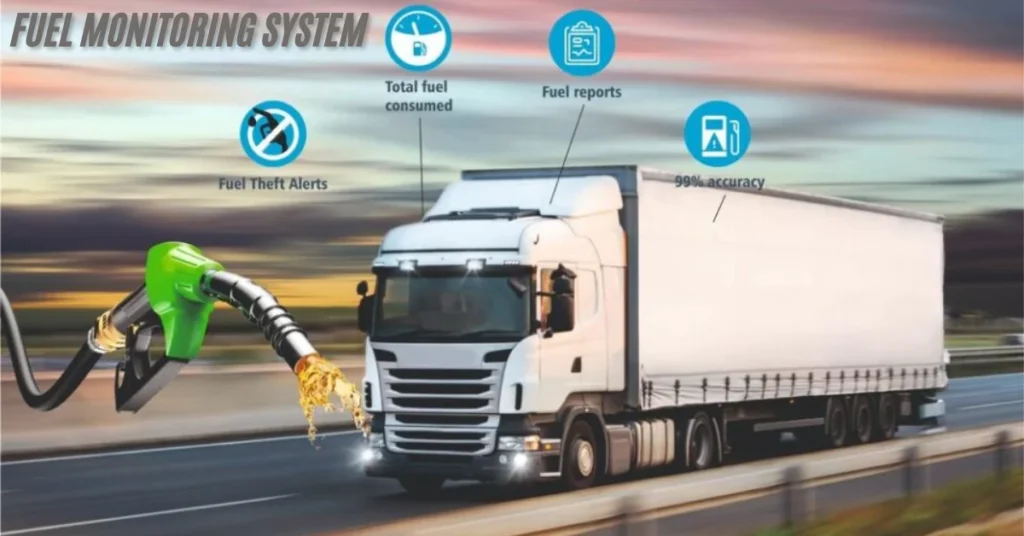Introduction to Fuel Monitoring Systems
fuel monitoring system is one of the largest expenses for that rely on transportation. Whether you’re managing a fleet of trucks, delivery vans, or service vehicles, every drop counts. Enter the world of fuel monitoring systems—a game-changer for optimizing fuel usage and cutting costs.
Imagine having real-time insights into your fuel consumption patterns right at your fingertips. With advanced GPS technology integrated into these systems, you can track where your vehicles are going and how efficiently they’re using fuel along the way. This isn’t just about saving money; it’s about gaining control over an essential aspect of your operations.
As companies seek innovative ways to enhance efficiency and reduce overheads, investing in a GPS fuel monitoring system could be the key to unlocking significant savings while streamlining processes. Let’s dive deeper into what makes these systems so invaluable for any business looking to maximize their resources effectively.
Benefits of Using a GPS Fuel Monitoring System
A GPS fuel monitoring system offers significant advantages for businesses that rely on vehicles. First, it provides real-time data on fuel consumption. This transparency helps organizations identify inefficiencies and adjust their operations accordingly.
Additionally, these systems reduce the risk of fuel theft. By tracking exact locations and usage patterns, companies can safeguard their resources more effectively.
Another key benefit is enhanced route optimization. With detailed insights into fuel usage during various journeys, businesses can plan routes that minimize costs while maximizing productivity.
Moreover, a robust reporting feature allows for in-depth analysis over time. Businesses can spot trends and make strategic decisions based on historical data.
Improved compliance with regulations becomes easier with accurate records at hand. Maintaining transparent logs ensures adherence to industry standards without excessive manual effort.
Features and Technology of a GPS Fuel Monitoring System
GPS fuel monitoring systems come packed with advanced features that elevate how businesses manage their fuel consumption. Real-time tracking is a game-changer, providing instant updates on fuel levels and usage patterns.
These systems often include geofencing capabilities. This allows companies to set virtual boundaries, receiving alerts if vehicles operate outside designated areas. Such features enhance security and prevent unauthorized use of resources.
Data analytics plays a crucial role as well. Insights derived from historical data help identify trends in consumption, enabling smarter decision-making for fleet operations.
Integrating with existing software can streamline processes further. Many GPS systems sync seamlessly with fleet management applications, enhancing overall operational efficiency without significant disruptions.
With mobile accessibility, managers can monitor activities on-the-go. This flexibility ensures you stay informed no matter where business takes you.
How to Choose the Right System for Your Business
Choosing the right fuel monitoring system for your business can be daunting. Start by assessing your specific needs. Consider factors like fleet size, types of vehicles, and operational demands.
Next, explore features that matter to you. Look for real-time tracking capabilities or advanced reporting tools that provide insights into consumption patterns.
Compatibility is crucial too. Ensure the system integrates seamlessly with existing technologies in your operations.
Don’t overlook user experience; a straightforward interface will simplify training and daily use.
Research customer support options offered by providers. Reliable assistance can make all the difference when issues arise or questions need answering.
Taking these steps will help you find a solution tailored to boost efficiency and save costs effectively.
Cost Savings and ROI Analysis
Implementing a GPS fuel monitoring system can significantly reduce operational costs for businesses. By tracking fuel consumption in real-time, companies can identify inefficiencies and wastage. This transparency allows for quick adjustments that lead to immediate savings.
Calculating the return on investment (ROI) starts with analyzing the initial costs versus long-term gains. Consider factors like reduced fuel expenses, lower maintenance costs, and fewer unauthorized trips. Each of these elements contributes to improved profitability over time.
Moreover, many systems offer data analytics features that highlight trends and patterns in fuel usage. These insights facilitate strategic planning and resource allocation, further enhancing financial efficiency.
Companies often report substantial savings within months of implementation. It’s not just about reducing expenditures; it’s about creating a culture focused on sustainability and accountability within fuel management processes.
Real-Life Examples of Successful Implementation
A logistics company in Texas adopted a GPS fuel monitoring system to streamline its operations. Within months, they reported a 15% reduction in fuel expenses. Real-time data allowed them to optimize routes and minimize idle time.
Similarly, a construction firm based in California integrated this technology into their fleet management. They noticed significant savings on refueling costs and improved accountability among drivers. The system provided insights that pinpointed where fuel was being wasted.
Another example comes from an agricultural business that uses the system for managing their machinery’s fuel consumption. By tracking usage patterns, they adjusted maintenance schedules, leading to fewer breakdowns and lower repair costs.
These case studies highlight the versatility of GPS fuel monitoring systems across various industries, proving their effectiveness in driving operational efficiency and cost savings.
Conclusion: The Future of Fuel Management with GPS Technology
The landscape of fuel management is evolving rapidly, driven by advancements in GPS technology. As businesses strive to reduce operational costs and enhance efficiency, the adoption of a robust fuel monitoring system becomes increasingly essential. These systems not only provide real-time data but also empower organizations to make informed decisions based on accurate metrics.
As we look ahead, the integration of artificial intelligence and machine learning into fuel monitoring systems promises even greater insights and automation capabilities. Companies will benefit from predictive analytics that allow for proactive maintenance and optimized routing strategies.
Investing in a GPS fuel monitoring system is more than just adopting new technology; it’s about embracing a future where every drop of fuel counts. Organizations ready to harness these innovations are likely to see significant long-term savings while contributing to sustainability efforts through reduced waste.
The path forward is clear—fuel management will continue to evolve with GPS technology at its core, paving the way for smarter business practices across industries.
FAQs
Q: What is a GPS fuel monitoring system?
Ans: A GPS fuel monitoring system tracks fuel usage, location, and driving behavior to help reduce fuel consumption and improve fleet efficiency.
Q: How can a fuel monitoring system save money?
Ans: It identifies fuel wastage, reduces idling time, and optimizes routes, leading to lower fuel costs and enhanced productivity.
Q: Can a GPS fuel monitoring system prevent fuel theft?
Ans: Yes, it provides real-time alerts on fuel levels, detecting any unusual drops that may indicate theft or leaks.
Q: How much can a business save with a fuel monitoring system?
Ans: Studies show savings of up to 25% on fuel costs, along with improved productivity and reduced maintenance expenses.
Q: Is a fuel monitoring system easy to install?
Ans: Most systems are easy to install and integrate seamlessly with existing GPS tracking devices in your fleet vehicles.







